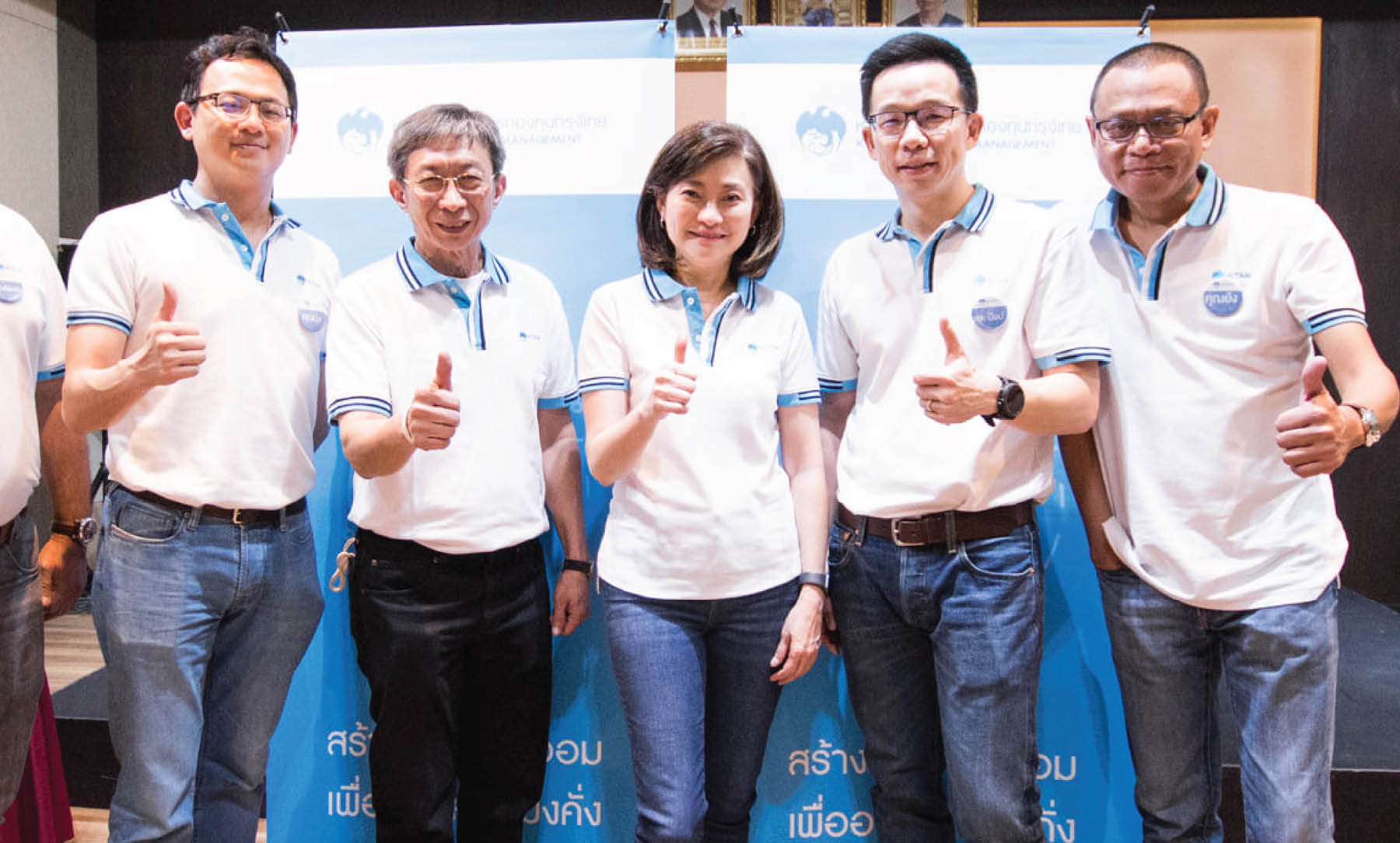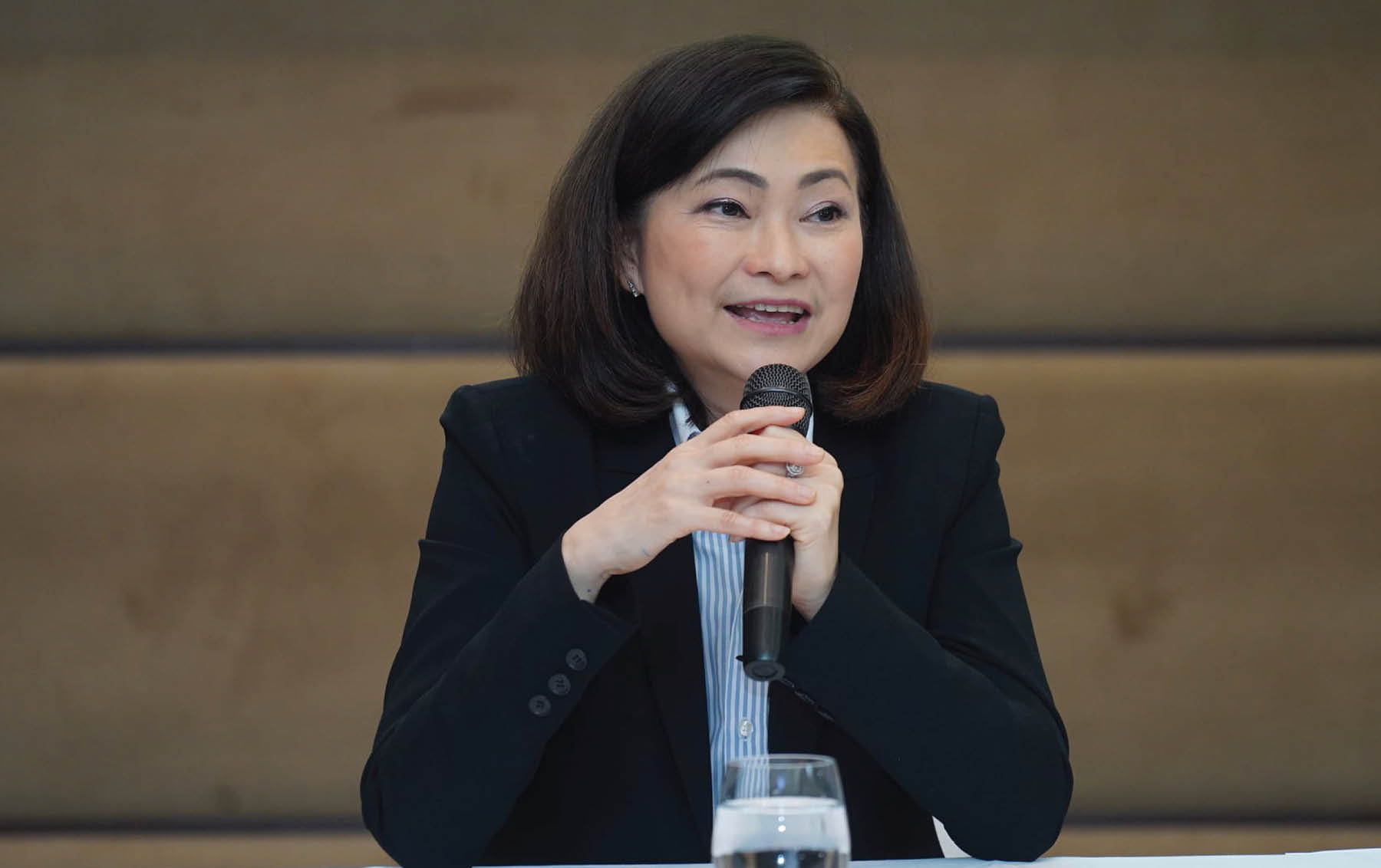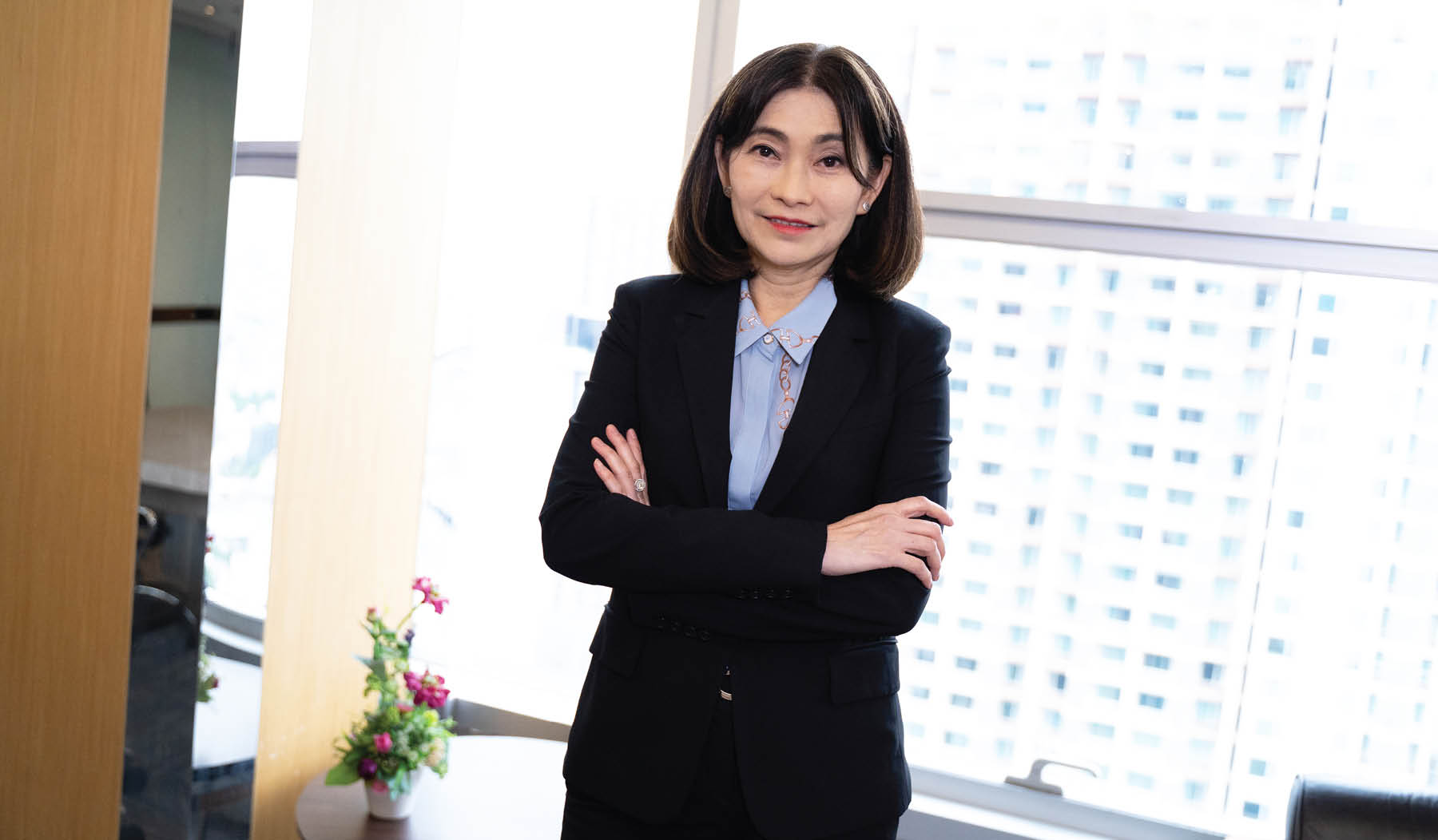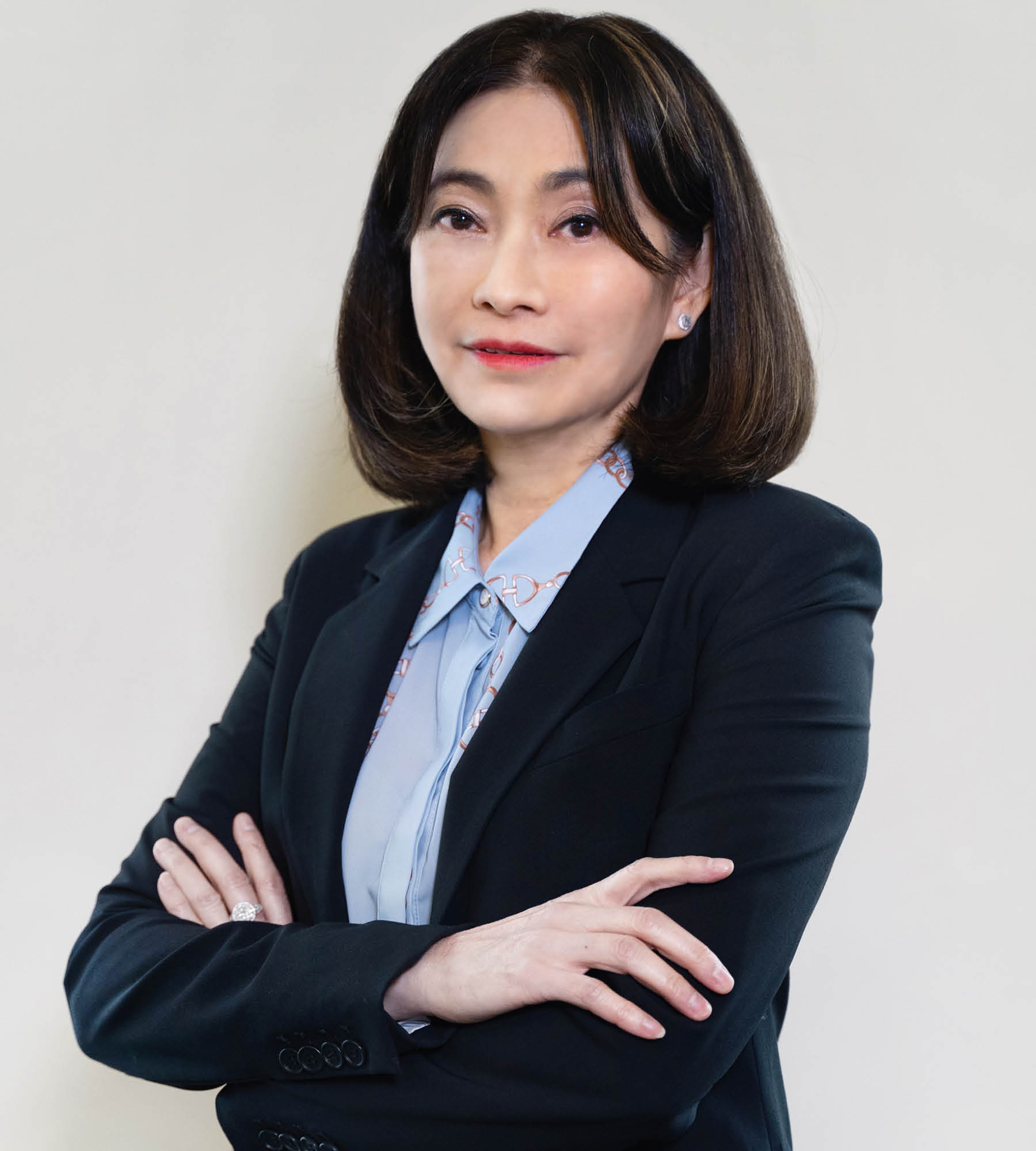Language
You can read the magazine in one of the following languages
Potential and opportunity are very particular about their appearance. Where these twins may be invisible to most, they’ll be readily apparent to a select few. We’re left to merely speculate as to how those lucky few are chosen, but one of them, Krungthai Asset Management (KTAM) CEO Chavinda Hanratanakool, says that in her case, it’s down to engagement.
“Some people take on a job, take the money, do the same thing every day and nothing ever changes,” she says. “That’s not me.”
When leading Thai investment management company KTAM was looking for a new CEO, Hanratanakool says she saw more than a career opportunity. “At the time, the company was struggling, but I could see so many factors I felt could – should – be cause for growth,” she says.

“Clients want to see you doing well during the good times, but they very much need to see you at your best in the tough times.”
“They had the right product and they had these other factors, and I felt that I could do a lot with all that, so I joined the company as Senior Executive Vice President.”
It was a move that surprised many of her clients. “They gave me a year,” she laughs. “And I almost agreed with them. If the attitude of a company isn’t aligned with mine, I wouldn’t stay. If the role isn’t dynamic, I wouldn’t stay.”
But stay she did and today, she’s reached the top of the company ladder. “I’m still here,” she says. “I feel like my hands are always full and I can initiate things that are good for business. That makes me happy.”
Hanratanakool doesn’t go so far as to call herself a success, however. “There’s still too much to do. The investment industry is challenging and change is always happening,” she says. “But what we have done, and I’m most proud of, is that KTAM has entered the industry’s top five.”
Now the fourth-largest asset management company in Thailand, the state-owned KTAM features an array of services that extend beyond the investment field. Private equity trusts, future funds and REITs fall well within the business’s scope, but investment remains a focus, particularly for the sake of less-informed clients.
“We offer less complicated services or at least make things easy to understand,” Hanratanakool explains. “Some of our clients are very sophisticated and can choose their own products, but others don’t have a strong understanding in terms of investment, so we have options to suit each client in terms of risk and knowledge.”

“We put our clients first. We know investment isn’t easy.”
To say KTAM is client-focused is something of an understatement; he says it’s closer to being client-centric. “We put our clients first,” she says. “We know investment isn’t easy. You have to be able to learn the risks, to understand that fortunes can go up and down, but in the long run it can be a great source of return.”
Therefore, KTAM’s culture is centered around support, teamwork, transparency and client-centricity. “That’s the position we want to be in,” Hanratanakool reveals.
“You have to be able to be there for clients during good times and bad, and when things get rough you have to be able to say sorry, that you will do better in future. Clients want to see you doing well during the good times, but they very much need to see you at your best in the tough times.”
A key component of KTAM’s client-centric approach to business is its wholehearted embrace of technological innovation, which the business uses to enhance its offerings. Algorithms and AI in particular have shown themselves as winning elements of KTAM’s operations.
“What we try to do is combine technology with the skills of our fund managers,” Hanratanakool says. “They can complement each other to form a very efficient model, particularly in the long run.”
Future plans on the innovation front include a full-bodied shift to the cloud, which he hopes will improve KTAM’s agility. “We want to make ourselves as light and nimble as possible,” she says. “The more tasks we can outsource to cloud computing or external exports means we’re freed up to concentrate on investor communication.”
And of KTAM’s many silos, communication channels with clients is one of the most crucial. The company has nine clearly defined ways by which to connect to its customers. Communication, says Hanratanakool, is the new consumption.
“In Thailand, it’s in people’s nature to consume through voice, by reading, by text, and each person has their own preference, so we cater to a range of those needs,” she says. “We’re particularly encouraging of the younger generation to break into investing via our platform, and that requires channels that align with their communication preferences.”

“If you can’t move at the speed of trends, you’ll be left behind. It’s that simple.”
KTAM’s research shows that young people often prefer to do their own research and educate themselves when it comes to personal finance. “They don’t want to be guided, they just want to help themselves, and that’s OK,” she says.
“We provide the information they need, just as we provide further support for middle-aged investors looking for help to build a portfolio. Either way, we’re increasing our client base in terms of the next generation going forward, and that’s one of my goals.”
Goals are a vital part of Hanratanakool’s approach to any role. “If I want success, I have to have a goal,” she says. “I’m very results-oriented, so a good fit for this industry.”
It’s an industry where dynamism is the name of the game, she says, and KTAM allows her to push her work philosophy to new heights.
“If you can’t move at the speed of trends, you’ll be left behind. It’s that simple,” she says. “And I don’t want any company I lead to ever be left behind. In a dynamic market, you must keep pace and not slow down even once.”
